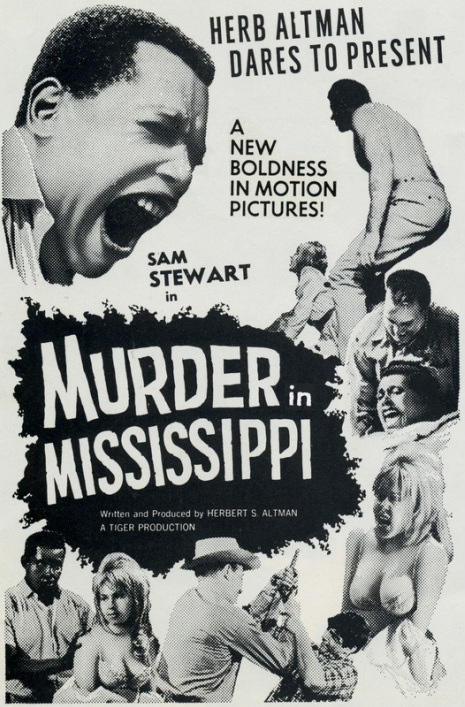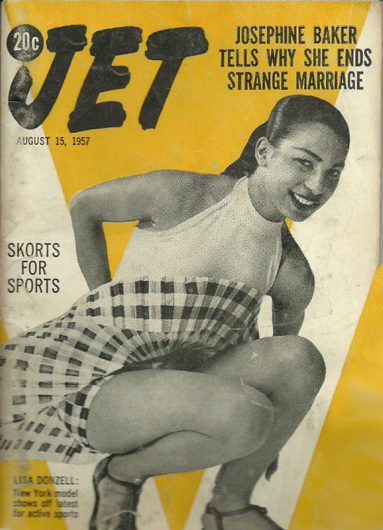Murder in Mississippi (1965)
On the night of June 21, 1964, three young civil rights workers in Philadelphia, Mississippi were murdered by an organized mob that included Ku Klux Klan members, employees of the county sheriff's office, and officers from the local police department. The mens' bodies were then dumped in a shallow grave and their car driven off the road and set afire. The killers quickly engineered a coverup, swearing one another to secrecy under threat of death. The workers' disappearance aroused media suspicion and captured the attention of the nation, despite claims from the governor of Mississippi that the three men might simply have traveled to Cuba.
Spurred to action by Attorney General Robert F. Kennedy, an apathetic J. Edgar Hoover reluctantly sent 150 FBI agents to investigate. The victims' bodies were found by a search party six weeks after their deaths, and by December federal agents had identified 18 individuals suspected of involvement in the slaying. Among them were a sheriff, a deputy sheriff, a candidate for sheriff, and a Baptist minister. The Mississippi state government refused to prosecute any of the suspects, though seven were successfully convicted in federal court nearly a year later. The longest sentence any of the convicted killers served was six years.
Spurred to action by Attorney General Robert F. Kennedy, an apathetic J. Edgar Hoover reluctantly sent 150 FBI agents to investigate. The victims' bodies were found by a search party six weeks after their deaths, and by December federal agents had identified 18 individuals suspected of involvement in the slaying. Among them were a sheriff, a deputy sheriff, a candidate for sheriff, and a Baptist minister. The Mississippi state government refused to prosecute any of the suspects, though seven were successfully convicted in federal court nearly a year later. The longest sentence any of the convicted killers served was six years.

Aside from the Nazi holocaust genre, Ilsa, She-Wolf of the S.S. and its ilk, it is difficult to imagine a more tasteless subject for an exploitation film. Filmed a year after the horrific events upon which it is loosely based, the cheaply made black-and-white Murder in Mississippi also juices up the lurid proceedings by adding two women (one a blonde southern belle) to the doomed Freedom Rider mission and a grisly detail to the final murder. As though the killing of unarmed youths by those entrusted with public safety wasn't sufficiently shocking, intimations of rape and physical emasculation are tossed into the seamy southern stew.
But despite its low-budget limitations and tawdry drive-in aspirations, Murder in Mississippi is more compelling than 1988's big-budget Hollywood version, Mississippi Burning, or the 1990 made-for-television Murder in Mississippi. From the credit sequence of the five Freedom Riders cruising carefree in their convertible towards their fate as cheesy "travelog" music blares in the background, to the improbable and unexpected conclusion, Murder in Mississippi betrays the progressive humanism of its makers, several of whom are better known for producing violent softcore pornography.
Filmed not in Mississippi but in Long Island and New Jersey, Murder in Mississippi was directed by the mysterious Joseph P. Mawra, the auteur behind the sadomasochistic "Olga" series (Olga's Girls, Olga's House of Shame, etc.). Rumor has it that "Mawra" was actually Joseph Maurer, a secretive family man from the 'burbs who made films for producer George Weiss to supplement his day job income.
With full synched sound and none of the archaic narration of the Olga films, Murder in Mississippi is Mawra's most polished feature. The handheld cinematography is the handiwork of William (aka "Werner") Rose, who shot films for Mawra and others, and directed half a dozen of his own, including The Smut Peddler and The Girl in Room 2-A. Writer and producer Herbert S. Altman's sole other credit is the hard-to-see Dirtymouth (1970), a Lenny Bruce biopic that predated the better-known Dustin Hoffman film by four years. The melodramatic score, which to my pummeled ears resembles library tracks, is credited to Joseph Lesko, a musical editor for television's The Patty Duke Show.
But despite its low-budget limitations and tawdry drive-in aspirations, Murder in Mississippi is more compelling than 1988's big-budget Hollywood version, Mississippi Burning, or the 1990 made-for-television Murder in Mississippi. From the credit sequence of the five Freedom Riders cruising carefree in their convertible towards their fate as cheesy "travelog" music blares in the background, to the improbable and unexpected conclusion, Murder in Mississippi betrays the progressive humanism of its makers, several of whom are better known for producing violent softcore pornography.
Filmed not in Mississippi but in Long Island and New Jersey, Murder in Mississippi was directed by the mysterious Joseph P. Mawra, the auteur behind the sadomasochistic "Olga" series (Olga's Girls, Olga's House of Shame, etc.). Rumor has it that "Mawra" was actually Joseph Maurer, a secretive family man from the 'burbs who made films for producer George Weiss to supplement his day job income.
With full synched sound and none of the archaic narration of the Olga films, Murder in Mississippi is Mawra's most polished feature. The handheld cinematography is the handiwork of William (aka "Werner") Rose, who shot films for Mawra and others, and directed half a dozen of his own, including The Smut Peddler and The Girl in Room 2-A. Writer and producer Herbert S. Altman's sole other credit is the hard-to-see Dirtymouth (1970), a Lenny Bruce biopic that predated the better-known Dustin Hoffman film by four years. The melodramatic score, which to my pummeled ears resembles library tracks, is credited to Joseph Lesko, a musical editor for television's The Patty Duke Show.

Murder in Mississippi appears to be the sole cinematic acting credit for all of the Freedom Riders but for Sheila Britt, who portrays Carol Byrd, the "southern girl from a good family." Britt had quite a sexploitation career (often, as here, billed as Sheila Britton) in films by New York-based filmmakers including Joe Sarno and the Amero brothers. She's also credited as appearing in the softcore inserts haphazardly spliced into the reissue print of Andy Milligan's Seeds (1968). Other cast members will be recognizable to eagle-eyed exploitation buffs, such as Derek Crane as the corrupt sheriff. Crane had previously appeared in several early Joe Sarno films, most memorably as Audrey Campbell's husband in 1964's Sin in the Suburbs.
As Phil Loving, a vicious cretin who with his brother Andy (Wayne Foster) is tasked with disposing of the victims' bodies, Sam Stewart earns his top billing in the film's ads. Stewart, one of Doris Wishman's favorites, oozes reptilian malice as he menaces the cowering Britt in a desolate shotgun shack. One scene involving fried chicken prefigures nastier business in Tracy Letts' play (and William Friedkin's 2011 film) Killer Joe. Richard Towers, Mari's father from The Last House on the Left (1972), eschews subtlety as Carol Byrd's brother Dickie, a pompous, naive New York actor who swoops in to rescue his sister but foolishly accepts the offer of a prostitute (Lisa Donzell) from the conniving sheriff. Otis Young, cast in a minor role as the local CORE organizer, later starred in Hal Ashby's The Last Detail (1973) with Jack Nicholson and in numerous films and television series until his death in 2001.
The co-feature on Something Weird Video/Image Entertainment's DVD of Murder in Mississippi is the jaw-dropping pastiche The Black Rebels (1965). When director Richard L. Bare (Green Acres, Petticoat Junction) and producer William Rowland's teenage delinquency and racial riot melodrama This Rebel Breed (1960) tanked at the box office, Rowland filmed nudie sequences and cut them - often seemingly at random - into the film. The result was then tossed to the raincoat crowd under its current name, as well as Lola's Mistake. The original version (available from Alpha Video), with character actor Mark Damon in unconvincing blackface, a pre-West Side Story Rita Moreno, and a young Dyan Cannon as a teen gang leader's gal, was a woefully dated retread of the "youth in peril" films from George Weiss that often featured oily Tim Farrell as the heavy. As The Black Rebels, it's a fun-filled palliative to the oppressive horrors of Mawra's Murder in Mississippi.
As Phil Loving, a vicious cretin who with his brother Andy (Wayne Foster) is tasked with disposing of the victims' bodies, Sam Stewart earns his top billing in the film's ads. Stewart, one of Doris Wishman's favorites, oozes reptilian malice as he menaces the cowering Britt in a desolate shotgun shack. One scene involving fried chicken prefigures nastier business in Tracy Letts' play (and William Friedkin's 2011 film) Killer Joe. Richard Towers, Mari's father from The Last House on the Left (1972), eschews subtlety as Carol Byrd's brother Dickie, a pompous, naive New York actor who swoops in to rescue his sister but foolishly accepts the offer of a prostitute (Lisa Donzell) from the conniving sheriff. Otis Young, cast in a minor role as the local CORE organizer, later starred in Hal Ashby's The Last Detail (1973) with Jack Nicholson and in numerous films and television series until his death in 2001.
The co-feature on Something Weird Video/Image Entertainment's DVD of Murder in Mississippi is the jaw-dropping pastiche The Black Rebels (1965). When director Richard L. Bare (Green Acres, Petticoat Junction) and producer William Rowland's teenage delinquency and racial riot melodrama This Rebel Breed (1960) tanked at the box office, Rowland filmed nudie sequences and cut them - often seemingly at random - into the film. The result was then tossed to the raincoat crowd under its current name, as well as Lola's Mistake. The original version (available from Alpha Video), with character actor Mark Damon in unconvincing blackface, a pre-West Side Story Rita Moreno, and a young Dyan Cannon as a teen gang leader's gal, was a woefully dated retread of the "youth in peril" films from George Weiss that often featured oily Tim Farrell as the heavy. As The Black Rebels, it's a fun-filled palliative to the oppressive horrors of Mawra's Murder in Mississippi.